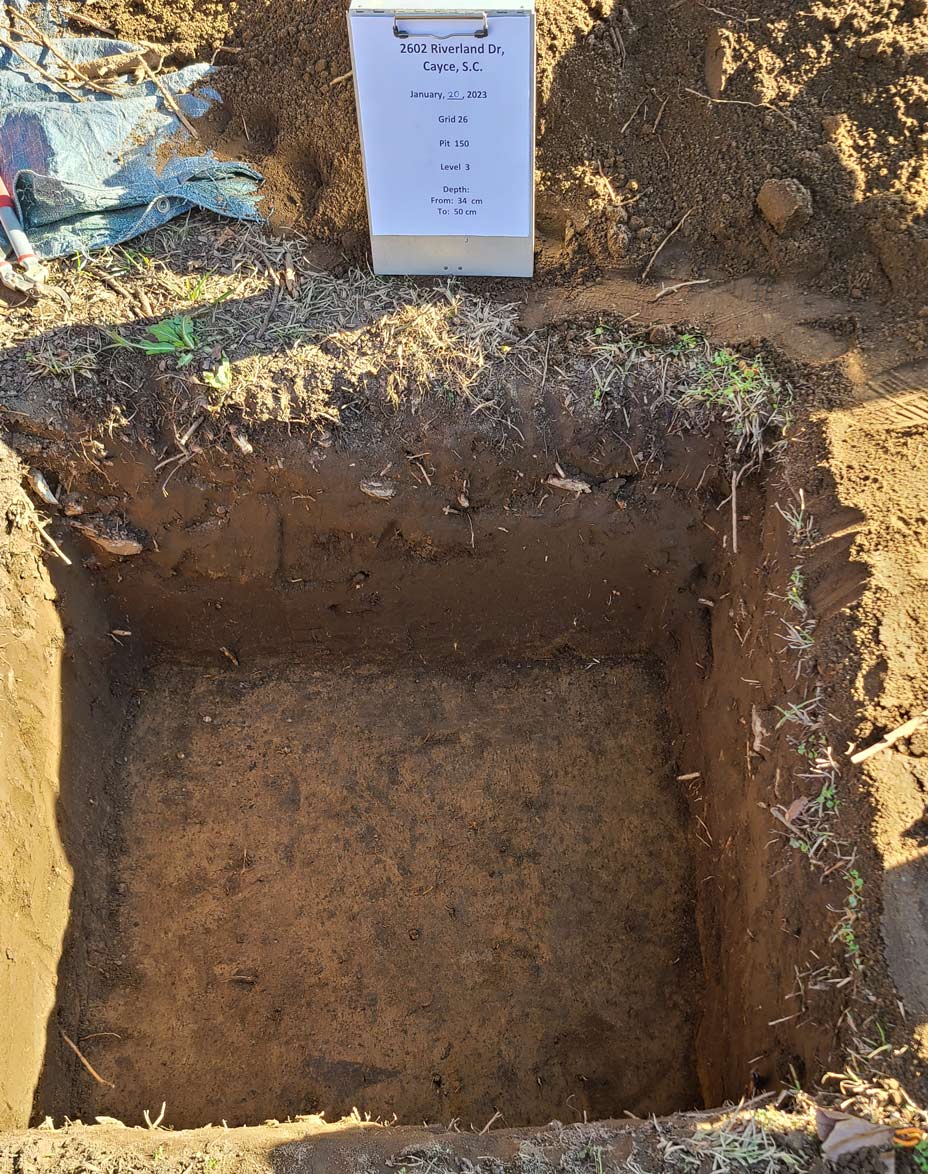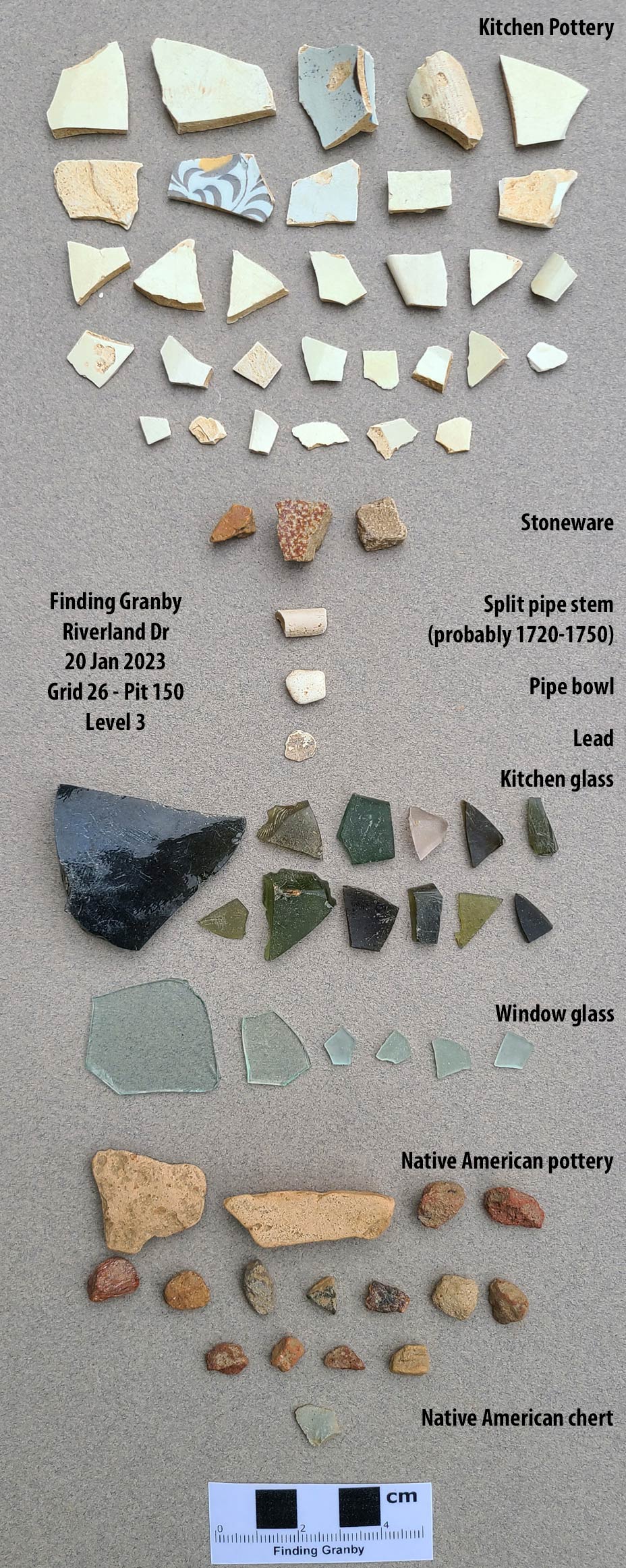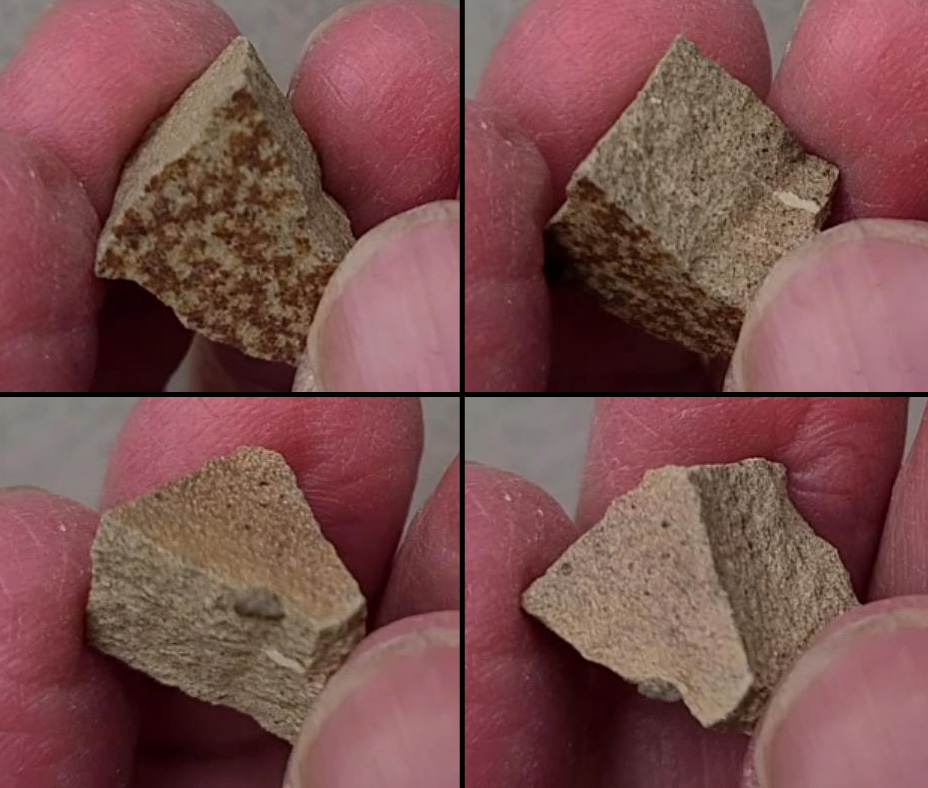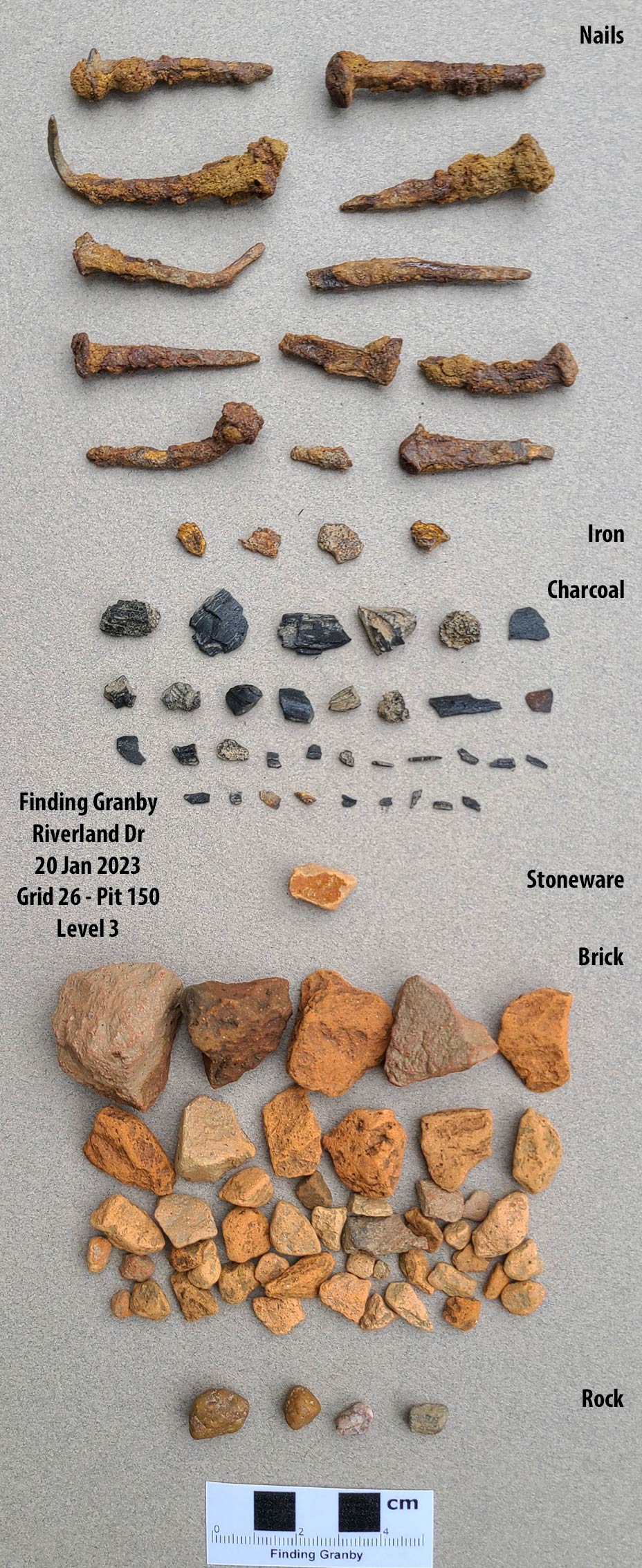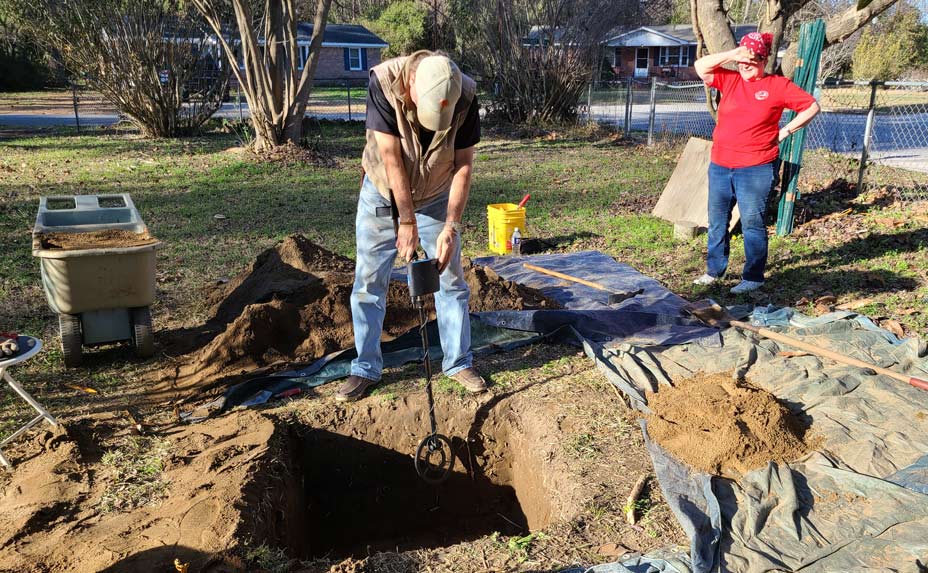Pit 150: Level 3
Completed on January 20, 2023 by Kim Masters, DC Locke, and David Brinkman. Level three gave us a large number of pearlware pottery pieces. These imported English ceramics were expensive and are a sign of wealth from the Granby period. But, also found in the level were pipe pieces and stoneware including a Fulham-type English brown salt-glazed stoneware piece. These items predate Granby and may haven been from Indian trader Thomas Brown:
"Nearly all Fulham-type stoneware found on American sites will date between ca. 1690 and 1775 (avg 1733), except perhaps for areas occupied by the British during the Revolutionary War (Noel Hume 1970:114).
Drinking vessels, bottles and storage jars were the most common Fulham-type stoneware forms. Mugs and tankards ranged in capacity from 0.25 pints to 2.5 quarts and bottles from one pint to several gallons (Noel Hume 1970: 113-114; Gaimster 1997: 320; Green 1999:17; Skerry and Hood 2009:68). Mugs could be globular (also called gorges and produced c. 1690-1740) or straight sided (c. 1690 through the 18th century), and some tankards had pouring lips (Hildyard 1985; Green 1999:153). Bottles were produced in two primary shapes; earlier bottles were globular in shape, while bottles from the late 18th century tended to be ovoid, with short necks and plain rims (Skerry and Hood 2009:68, 70). Ovoid and straight sided storage jars were used as all-purpose containers for wet and dry foodstuffs (Skerry and Hood 2009:783). Jugs, drug jars, pipkins, bowls, and tea and coffee services were among the other forms produced (Hildyard 1985; Green 1999; NoŽl Hume 2001). Early Fulham-type vessels copied German forms, but had moved away from this by the 18th century. These included the Bartmann-type bottles, which were made for only for a few years (Hildyard 1985; Gaimster 1997:311; Green 1999:17). In the 19th century, a wide variety of specialized forms were produced (Green 1999).
Overall, level three gives us good reason to continue working this area where we have an obvious mix of several historical periods. After processing the data, we also now see a distinct drop of brick and nails as we move west. This means we have probably reached the western wall of this kitchen/storage building. The question is, was this a cabin of Thomas Brown (1740) or a newer building on the Granby property (1780-1810)?
Pit 150: Level 3 produced:
